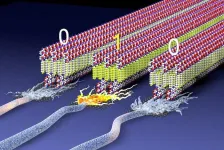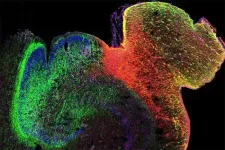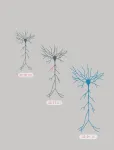(Press-News.org) A new study led by Pr. Serge McGraw, researcher at CHU Sainte-Justine and professor at Université de Montréal, shows that the effects of alcohol exposure on an embryo prior to implantation in the uterus can be detected in the late-gestation placenta. Using a mouse model well suited for this type of exposure, the researcher and his team observed significant molecular changes in the placenta, including the expression of numerous genes and DNA methylation, an epigenetic marker that influences gene expression by acting as a switch. Since the placenta plays a central role in the development and health of the fetus, these changes could have major consequences for the child’s future. The study also shows that these DNA methylation alterations could provide a robust molecular signature for detecting alcohol exposure in early pregnancy. This proof of concept paves the way for the development of diagnostic tests in humans enabling early detection of alcohol exposure from the very first days of a newborn’s life.
Different impacts depending on sex
For a long time, it was thought that exposure to alcohol during the preimplantation phase—when the fertilized oocyte goes from a single-cell to an embryo of a hundred or so cells—had no effect on the unborn baby, provided the embryo succeeded in implanting in the uterus. However, over the last few years, Serge McGraw’s team has demonstrated that this isn’t the case. The young embryo may survive this exposure, but brain development may be altered to varying degrees. The study published today reveals for the first time that the harmful effects of alcohol on fetal development aren’t directly attributable to placental abnormalities. However, molecular changes, particularly in gene expression due to changes in DNA methylation profiles, could play an important role in these deleterious effects.
Interestingly, the epigenetic impact of alcohol exposure varies by sex. In male embryos, the regulation of growth-related genes was more affected, corroborating data showing that males are more vulnerable to growth retardation after preimplantation alcohol exposure. In females, it was mainly the regulation of genes involved in the metabolism of serotonin—an essential neurotransmitter for brain development and function—that was affected. This suggests that a disruption in this signalling pathway could contribute to the brain morphological defects observed in their model.
It should be noted that this study is based on high alcohol consumption, the human equivalent of five or six drinks in an hour. This model is particularly relevant given that around half of all pregnancies are unplanned and that alcohol intake among women is on the rise worldwide according to the World Health Organization. “Our model seeks to reproduce and understand the effects of a situation in which a woman, about a week pregnant—and therefore carrying an embryo of just a few cells—consumes a large quantity of alcohol rapidly, at a party or bar for example, without necessarily knowing that she’s pregnant,” explains the researcher.
Towards early screening?
Although these results have yet to be confirmed in humans, the team believes that DNA methylation profiles could be a good indicator of whether a baby has been exposed to alcohol during gestation. “There’s no molecular diagnostic test for prenatal alcohol exposure at the moment,” explains Serge McGraw. “So, unless a child is very severely affected, difficulties often go unnoticed until school age or even adolescence. These youths may, for example, have concentration or behavioural problems that can hinder their progress at school.” A screening test based on this molecular memory of exposure, found in the placenta, would ensure appropriate medical follow-up from an early age.
About the study
The article "Sex-specific DNA methylation and gene expression changes in mouse placentas after early preimplantation alcohol exposure" is published by Lisa-Marie Legault, Thomas Dupas, Mélanie Breton-Larrivée, Fannie Filion-Bienvenue, Anthony Lemieux, Alexandra Langford-Avelar and Serge McGraw in the journal Environment International.
END
Effects of exposure to alcohol in early pregnancy can be detected in the placenta
2024-10-09
ELSE PRESS RELEASES FROM THIS DATE:
Scientists caution no guarantees when it comes to overshooting 1.5°C
2024-10-09
Even if it is possible to reverse the rise of global temperatures after a temporary overshoot of 1.5°C, some climate damages inflicted at peak warming, including rising sea levels, will be irreversible, according to a new study published today in Nature.
The study is the culmination of a three-and-a-half-year project, backed by the European innovation fund HORIZON2020, looking at so-called ‘overshoot’ scenarios where temperatures temporarily exceed the Paris Agreement’s 1.5°C ...
Nature and plastics inspire breakthrough in soft sustainable materials
2024-10-09
Step aside hard, rigid materials. There is a new soft, sustainable electroactive material in town — and it’s poised to open new possibilities for medical devices, wearable technology and human-computer interfaces.
Using peptides and a snippet of the large molecules in plastics, Northwestern University materials scientists have developed materials made of tiny, flexible nano-sized ribbons that can be charged just like a battery to store energy or record digital information. Highly energy efficient, biocompatible and made from sustainable materials, the systems could give rise to new ...
New quantum timekeeper packs several clocks into one
2024-10-09
Imagine walking into a room where several different grandfather clocks hang on the walls, each ticking at a different pace.
Quantum physicists at the University of Colorado Boulder and the National Institute of Standards and Technology (NIST) have essentially recreated that room at the scale of atoms and electrons. The team’s advancement could pave the way for new kinds of optical atomic clocks, devices that track the passage of time by measuring the natural “ticking” of atoms.
The group’s new clock is made from a few dozen strontium ...
Suicidal thoughts and behaviors among autistic transgender or gender-nonconforming US college students
2024-10-09
About The Study: This cross-sectional study addresses the dearth of information on how intersectionality in gender and autism status impacts the risk of suicidal thoughts and behaviors, and the results confirm the elevated risk of suicidal thoughts and behaviors among transgender or gender nonconforming and autistic populations. Interventions are needed to support college students with these identities.
Corresponding Author: To contact the corresponding author, Annabelle M. Mournet, MS, email amm883@psych.rutgers.edu.
To ...
The bright and dark sides of Pacific salmon biotransport
2024-10-09
Each year millions of Pacific salmon make a grand journey from the ocean to their freshwater spawning grounds at the end of their life cycles. This migration has rippling effects through food webs and ecosystems along the way. Whether they decompose or are consumed by other animals, these salmon deliver both nutrients and contaminants they have accumulated in their bodies after spending most of their lives growing at sea. A team of researchers from UConn, the University of South Dakota, the U.S. Geological Survey, Natural ...
New therapeutic strategy identified for triple negative breast cancer
2024-10-09
Triple negative breast cancer (TNBC) remains the most aggressive and deadly type of breast cancer, but new findings from cancer researchers at Brigham and Women’s Hospital, a founding member of the Mass General Brigham healthcare system, are pointing the way toward therapeutic strategies that could be tested in clinical trials in the future. Using patient-derived samples in pre-clinical work, researchers discovered that by combining two therapeutic agents they could nudge TNBC cells into a more treatable state. Findings are published in Nature.
“When combined, these therapeutic agents ...
Scientists create first map of DNA modification in the developing human brain
2024-10-09
A UCLA-led study has provided an unprecedented look at how gene regulation evolves during human brain development, showing how the 3D structure of chromatin — DNA and proteins — plays a critical role. This work offers new insights into how early brain development shapes lifelong mental health.
The study, published in Nature, was led by Dr. Chongyuan Luo at UCLA and Dr. Mercedes Paredes at UC San Francisco, in collaboration with researchers from the Salk Institute, UC San Diego and Seoul National University. It created the first map of DNA modification in the hippocampus and prefrontal cortex — two regions ...
Extended Timing: How neurons encode information on timescales that match learning
2024-10-09
New research from the Max Planck Florida Institute for Neuroscience published this week in Nature has identified a key step in how neurons encode information on timescales that match learning.
A timing mismatch
Learning takes seconds to minutes. However, the best-understood mechanisms of how the brain encodes information happen at speeds closer to neural activity—around 1000 times faster. These mechanisms, known as Hebbian plasticity, suggest that if two connected neurons are both active within a hundredth of a second, then the connection between the two neurons is strengthened. In this ...
Dual immunotherapy plus chemotherapy benefits specific subset of patients with lung cancer
2024-10-09
HOUSTON ―Researchers from The University of Texas MD Anderson Cancer Center have demonstrated that patients with metastatic non-squamous non-small cell lung cancer (NSCLC) harboring specific mutations in the STK11 and/or KEAP1 tumor suppressor genes were more likely to benefit from adding the immunotherapy tremelimumab to a combination of durvalumab plus chemotherapy to overcome treatment resistance typically seen in this patient population.
Study results, published today in Nature, identify ...
Scientists discover viral trapdoor blocking HIV and herpes
2024-10-09
Scientists discover viral trapdoor blocking HIV and herpes
Ghent, 10 October 2024 – A group of researchers led by Xavier Saelens and Sven Eyckerman at the VIB-UGent Center for Medical Biotechnology discovered how a protein linked to the human immune system wards off HIV-1 and herpes simplex virus-1 by assembling structures in the cell that lure in these viruses and then trap them or even take them apart. The research was spearheaded by first author George Moschonas, published in Cell Host and Microbe, and could be used to devise new strategies to combat these viruses.
The innate immune system of the human body can sense and respond to viruses by ...




